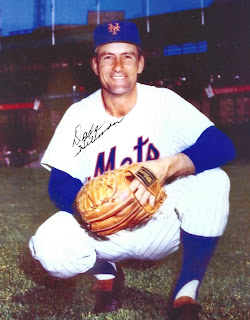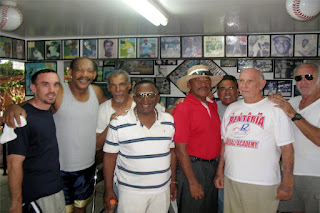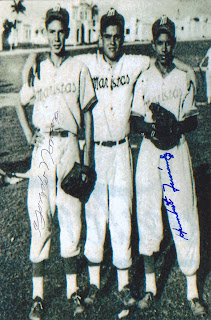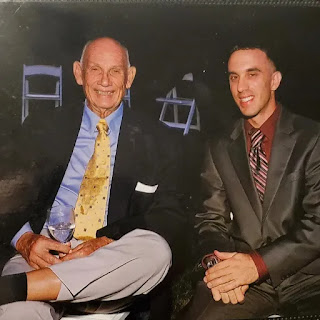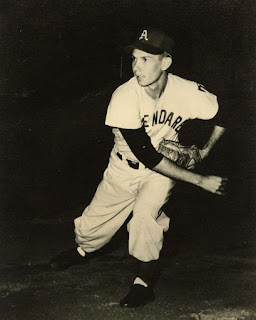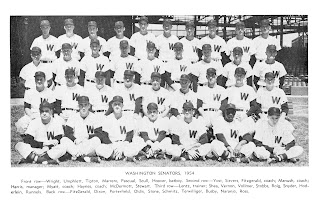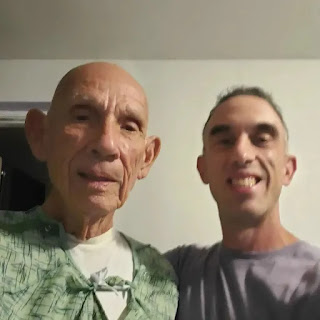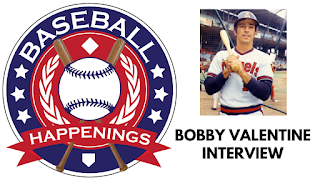Roger Craig, the split-fingered fastball master, who was part of Brooklyn's only World Series championship in 1955, died June 4, 2023 at the age of 93. The 12-year major league veteran later became the long-time San Francisco Giants manager from 1985-1992.
 |
| Roger Craig Throws Out First Pitch In 2012 At Citi Field / Mets |
Roger Craig holds a special place in New York baseball history lore, carrying the distinction of the first pitcher to take the mound for the New York Mets, as well as being a member of Brooklyn’s lone World Series championship team. At 89, Craig has outlasted nearly all of his peers that made the Brooklyn-heavy component of the 1962 Mets inaugural season.
Growing up in North Carolina, the lanky 6’4” pitcher faced a strong pull from another sport, basketball. He spent one year as a guard on North Carolina State’s freshman basketball team playing for the legendary Everett Case. While the opportunity to learn from a pioneer such as Case was tempting, it was not enough to compete with Brooklyn’s $6,000 bonus offer.
“I went to North Carolina State on a basketball scholarship,” Craig said. “When baseball season came around I talked to my dad [and told him] I wanted to drop out of school and play baseball and that is what happened. I dropped out and signed with the Brooklyn Dodgers.”
The Dodgers assigned Craig to their Class B team in Newport News to start the 1950 season. Still a teenager, Craig quickly discovered he was in well over his head.
“I was surprised they started me there,” he said. “That was a high way to start a young guy. I was 18 or 19. I started out in Newport News, and Al Campanis was the manager; I was really wild, and he sent me down to Valdosta, Georgia.”
With Craig in the modern day equivalent of rookie ball at Class D Valdosta, he was in the proper atmosphere for his skills to grow. Judging by how he explained it, his performance was far from perfect.
“I led the league in wins, strikeouts, base on balls, hit batsmen — everything,” he said.
While he was in Valdosta, Craig made the first of his Dodgers-Mets connections when he teamed up with a 20-year-old catcher named Joe Pignatano. He immediately noted the spark of his Brooklyn-born batterymate.
“Joe was a fiery competitor,” he said. “He went to the major leagues and became a great coach for a long time with the Mets.”
Before Craig could really mend his control as well as fortify his relationship with Pignatano, Uncle Sam arrived with a new uniform. The Army assigned him to a post in Fort Jackson, South Carolina, where he stayed for two years (1952-53) while many of his peers went overseas to Korea.
“The military really helped me because I was a basketball and baseball player,” he said. “All of my buddies went to Korea, and I stayed there and played sports. I had three catchers [who helped me], Haywood Sullivan, Frank “Big” House, and Ed Bailey. They said, ‘Kid, you have good stuff and a chance to play in the big leagues.’ They helped me, worked with me, and gave me a lot of confidence. I think I was 17-2 and 16-1 in two years down there.”
Just as Craig was to return to the Dodgers in 1954 after completing his military service, he suffered a cruel twist of fate that delayed his big league dreams.
“The day before I went to spring training, I was playing basketball to keep in shape,” he said. “I intercepted a pass, and a guy bumped me; I fell and broke my left elbow. I happened to have a family doctor; I talked to him and told him I had to go to spring training tomorrow. I told him to put an ace bandage on it and let me go to spring training. Finally, I talked him into it. I went to spring training and did not tell anybody for a week or two.
“Finally, Al Campanis came over, grabbed my left arm, and squeezed it. He said, ‘What the hell is wrong with you?’ I told him the fracture was small but had gotten bigger since spring training. When I played catch with my catcher down there, I told him not to throw the ball back too hard because I had a sore hand. If they threw it too hard, I’d let it go.”
His injury set off a true season beating the bushes, as Craig bounced around three teams in the Dodgers organization. He finally settled in with their Class B team in Newport News for the majority of the 1954 season.
With his impressive performance for Newport News in 1954, the Dodgers promoted Craig to their Triple-A team in Montreal for the 1955 campaign. After breezing through the league with a 10-2 record, Craig received a call to meet with his manager while the team played a series in Havana, Cuba. What happened next not only was a shock for Craig, but also for another of his future Hall of Fame teammates.
“When I got called to the big leagues, Tom Lasorda and I both pitched a doubleheader and [we] both pitched shutouts,” he said. “The next morning, the manager Greg Mulleavy called me in his office in Havana, Cuba. I said, ‘What the heck is going on? I went out and had a couple of beers.’ He said, ‘You’re pitching Sunday.’ I said, ‘I know, you already told me that.’ He said, ‘You’re pitching Sunday in Brooklyn!’ What a shock. Tommy was upset because he didn’t get called up.”
Pitching in Ebbets Field on a Sunday, Craig led the Boys of Summer to a 6-2 complete game victory. The man who went to North Carolina State with visions of hoop dreams was now standing tall on the mound as Brooklyn’s newest favorite son.
“When I first walked in that clubhouse with Jackie, Pee Wee, Duke, Furillo, and all those great Hall of Famers, I said, ‘I don’t belong here, what am I doing here?’” Craig said. “They made me feel welcome. I was lucky enough I pitched the first game of a doubleheader we played and beat Cincinnati with a complete game three-hitter victory.”
The Dodgers kept Craig on their roster throughout the rest of the regular season and the postseason. With the 1955 World Series knotted at two games apiece between the Dodgers and the New York Yankees, Dodgers manager Walter Alston called upon the rookie to give them the edge in the series.
“About the World Series, I pitched pretty well all year,” he said. “We lost the first two and won the next two. I told Joe Becker the bullpen coach, ‘I’ve gotta throw some.’ After I had thrown about ten minutes, he told me, ‘Sit down, you’ve had enough.’”
Craig did not immediately understand why his coach told him to stop throwing. That evening, after the Dodgers Game 4 win, Walter Alston made it evident why they wanted him to rest.
“He didn’t tell me then, but Walter Alston called and told him to sit me down,” he said. “We win the game. I go to the clubhouse, sit in front of my locker, and Alston walked up and said, ‘How do you feel?’ I said, ‘I feel great, I haven’t pitched.’ He said, ‘Well you’re starting tomorrow!’ I think Newcombe and Erskine were ready to pitch. I pitched six innings and we ended up getting a win. That was a great thrill.”
Fifty-seven years later when the Mets invited Craig to throw out the first pitch in 2012, all of his memories of World Series victory came screaming back as he toured New York City.
“My wife and I were here in New York and I threw out the first pitch for the Mets because I pitched the first game 50 years ago,” he said. “We stayed in Times Square and I remember the night I won my World Series game — my mother was there, my brother and my wife were with me, and I was on a TV show with Floyd Patterson.”
“After the show was over, we went to Jack Dempsey’s restaurant. He found out I was there and he sat down and talked with me. We came out and they had that big display in Times Square with the names going across it. My brother said, ‘Look up there, ‘Roger Craig beat the Yankees.’ It had my name up there. They got a big kick out of that.”
As the Dodgers emerged victorious over the Yankees to bring home Brooklyn’s first and only World Series championship, the young rookie was unaware of the moment’s significance. While he and the other upstarts were celebrating with hollered emotions, Craig noticed something different with the veterans.
“One thing about after the game was over, we were in the clubhouse and everyone was celebrating and drinking Schaefer and Rheingold beer,” he said. “All of the young guys, Roebuck, Bessent, Spooner, and myself were having a good time. You looked around, and all these guys, Jackie Robinson, Don Newcombe, Pee Wee Reese, and Duke Snider had tears in their eyes. I just realized that they had not won in so long and it was the first time they ever won it.”
“To get to this point and all, they all got very emotional. It was really something to witness. We just quieted down and let them be themselves.”
Craig stayed with the Dodgers as they moved from Brooklyn to Los Angeles. As one of the newer players on the Brooklyn team, he did not have the same attachment as his teammates who had planted their roots over a decade earlier.
“I was a young rookie and all that,” he said. “I was such a young guy and didn’t really see the total impact of guys like Gil, Erskine, Newcombe, Duke, and Campanella. A lot of the other guys did not want to leave. I am surprised that some of them even went.”
As he reflected further on the move, Craig realized how both National League teams’ westward migration opened the door for fresh New York Mets allegiances.
“I read the book O’Malley wrote about all the things he went through to build a stadium,” he said. “It was a bold move to do something like that. He talked Stoneham into going with the Giants. To move two clubs —that is why the Mets had such great fans. The Giants and Dodgers fans did not want to be Yankee fans. They were great Mets fans and it helped.”
As the Mets tried to capitalize on those nostalgic hopes that Craig noted, he and Gil Hodges were amongst the many former Dodgers that the Mets selected in the 1961 expansion draft. As sentiment has grown for Hodges’ Hall of Fame induction, Craig shared what made his late teammate special.
“He was the nicest individual I ever met in my life, on the field or off the field,” Craig noted. “He was a real professional and a gentleman. I could see why he was a great manager. He was a great hitter, but also probably, the best defensive first baseman I have seen. He was a catcher too; he could catch if he wanted to. He would have pine tar over his hands all the time. I would take a brand new ball and throw it over to him, he would rub it one time and it would have pine tar all over it. Sometimes the cover would be loose because he had those big strong hands. He was a great guy to play with.”
Craig was a mainstay in the Mets rotation during their first two seasons, pitching in 88 games, 27 of them complete games. He played an additional three years afterward, wrapping up his 12-year major league career with the Philadelphia Phillies in 1966. While he took the brunt of 46 losses with Mets, often with little to no run support, he still found happiness being in the company of familiar faces.
“It was like you had gone to a new team and all that, but with all those guys that played with Brooklyn and Los Angeles, it wasn’t that bad,” he said. “We just kinda had the good camaraderie right away, Don Zimmer, Gus Bell, Frank Thomas, Richie Ashburn, Hobie [Landrith], Felix Mantilla, etc. You think with those names that we would have won more games than we did, but it just didn’t happen.”

